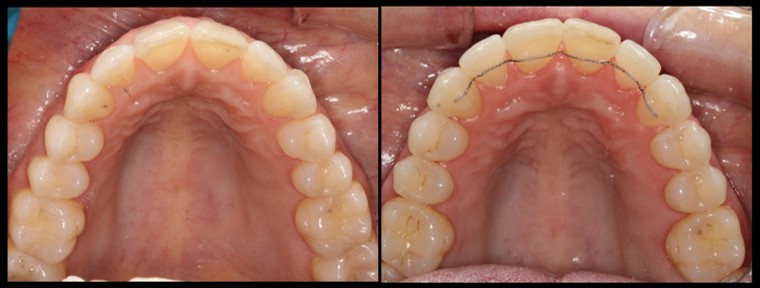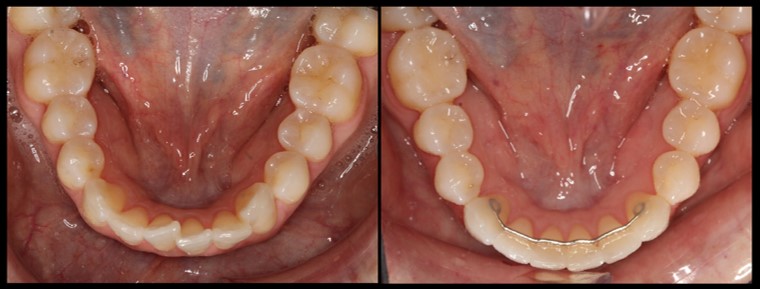 Treating mild tooth irregularities presents a unique dilemma for both patients and orthodontists. These irregularities, often seen as cosmetic imperfections rather than functional issues, can trigger mixed feelings. While some patients embrace the quirks in their smile, others worry about long-term dental health. Orthodontists, meanwhile, must decide whether intervention is necessary and what form it should take.
Treating mild tooth irregularities presents a unique dilemma for both patients and orthodontists. These irregularities, often seen as cosmetic imperfections rather than functional issues, can trigger mixed feelings. While some patients embrace the quirks in their smile, others worry about long-term dental health. Orthodontists, meanwhile, must decide whether intervention is necessary and what form it should take.
In this article we take a closer look at the subtle but complex decision-making process around minor tooth misalignments and how both patients and practitioners can navigate it.
When a Small Imperfection Isn’t Just Cosmetic
Mild irregularities might include slightly crooked teeth, minor crowding, or a small gap between teeth. These issues are not always obvious and may not affect a person’s ability to chew or speak. Some patients even view them as part of their identity, adding character to their smile.
But for us as the orthodontist, what looks cosmetic may signal us deeper concerns about the patients’ health needs they won’t necessarily be aware of. A slightly misaligned tooth today can lead to uneven wear, bite issues, or cleaning difficulties down the line. Even subtle changes in bite pressure can put strain on the jaw or lead to enamel erosion over time.
This creates a core tension: when is it worth intervening, and when is it better to simply observe and monitor?
 Above image of a patient's upper arch with post-treatment fixed retainers.
Above image of a patient's upper arch with post-treatment fixed retainers.
 Above image of a patient's lower arch with post-treatment fixed retainers.
Above image of a patient's lower arch with post-treatment fixed retainers.
How Patients See the Problem
Looks Versus Long-Term Health
Many patients with mild irregularities don’t notice them or don’t feel bothered by them. For these individuals, their concern isn’t necessarily about fixing a problem, it’s about whether the perceived flaw is worth the hassle of correction. They may not see any functional impact and, therefore, hesitate to pursue treatment.
However, as orthodontists we often see these cases differently. A mild irregularity may not be urgent, but it could cause challenges in the future for the patient. For example, minor crowding can make it harder to floss effectively, leading to plaque build-up and gum disease.
Weighing Up Time & Cost
Even when treatment is minimal, orthodontics requires time and money. Clear aligners, for instance, may seem low maintenance, but they often need regular adjustments, check-ups, and strict wear schedules.
Patients may question the value of spending thousands on a treatment they view as optional. It’s not always an easy cost to justify, particularly when the outcome feels largely cosmetic. The investment a patient makes into their orthodontic treatment must be weighed carefully against the perceived benefit.
Understanding the Downsides
While orthodontic treatment is considered safe, it isn’t risk-free. Discomfort, enamel wear, root resorption, and soft tissue irritation are all possibilities. Patients with braces or aligners must be diligent with oral hygiene to avoid cavities or gum inflammation. There’s also the risk of relapse if retainers aren't used post-treatment.
The perception of these risks may discourage treatment if the initial concern is minor. We find that patients often need guidance to understand not just the risks of treatment, but the risks of not providing treating.
Informed & Not Rushed
Ultimately, patients need more than just technical information, they need context from us as their treatment provider. What happens if they do nothing? Will the condition stay the same, or might it worsen over time? With clear explanations and realistic expectations, patients can make informed decisions that align with both their lifestyle and oral health goals.
The Orthodontist’s Dilemma
Clinical Concerns vs. Patient Comfort
As orthodontists we must tread carefully between offering sound clinical advice and respecting the patient’s preferences. If a patient is content with their smile, pushing for correction may seem unnecessary or even intrusive. However, if a small irregularity has the potential to affect long-term oral health, as practitioners we have a duty to bring it to the patient’s attention.
This balance can be difficult. Over-treatment is a concern, but so is under-treatment. The key lies in honest, respectful conversations and collaborative decision-making.
Here at The Orthodontists, we are proud that we have always kept an ethical and professional approach to our patient’s needs and wishes. We have a broad range of clinicians with over 135 years of combined experience in orthodontics at both clinical and academic levels that ensure this approach is at the forefront of our practice.
Finding the Right Fix
In recent years where distruptive technologies have arisen and been marketed direct to the patient, orthodontists must now also consider whether traditional braces are appropriate for mild issues. Often, less invasive options are more suitable, such as removable clear aligners or short-term orthodontic treatments. These can offer a good balance between effective correction and minimal disruption to the patient’s life.
However, even minimal treatments require commitment. For patients unwilling or unable to comply with treatment alternatives like cosmetic bonding or selective reshaping may offer a better path forward.
Giving Patients the Full Picture
Clear communication is critical. Patients need to understand not only the "how" of treatment but also the "why."
Orthodontists should explain how even mild irregularities can affect long-term oral function or hygiene. They should also outline each treatment option’s pros, cons, duration, and cost. Well-informed patients are more likely to stick with treatment and feel satisfied with the results.
Educational tools like before-and-after photos, digital simulations, or 3D scans can help patients visualise outcomes and feel more confident in their choices.
What Else Should Be Considered
When to Start, or Wait
While early orthodontic intervention can benefit certain issues, like jaw development or severe crowding, it isn’t always necessary for mild irregularities. Monitoring growth and changes over time may be the best approach, especially in younger patients whose mouths are still developing.
On the other hand, waiting too long can limit treatment options. Minor issues may become more severe if neglected. Orthodontists must use their clinical judgment to recommend the right timing based on each patient’s development and risk factors.
Matching Treatment to Lifestyle
Each patient brings their own values, concerns, and expectations to the table. Some want a “perfect” smile. Others just want to make brushing easier or reduce the risk of future problems. Some may reject treatment altogether if it disrupts their daily routine or lifestyle.
Listening to what matters to the patient is essential. A one-size-fits-all solution rarely works. Treatment should be tailored to both dental needs and personal goals.
What the Future Might Hold
Even if a minor irregularity looks stable now, it might lead to complications later. Food may get trapped, gums may recede, or teeth may shift further over time.
Orthodontists should assess whether non-treatment poses any long-term risk. If not, no action may be necessary. If yes, patients need to be made aware, ideally with supporting visuals or models to understand the potential impact.
In many cases, maintenance is key. Mild irregularities might be managed through regular cleanings, monitoring, and preventive care, avoiding the need for formal orthodontics.
Stability and Instability
Milld irregularities are generally very simple to correct however the patient must appreciate that moving the teeth into alignment will disrupt the bone and soft tissue holding the tooth in position. The tooth has essential moved from a relatievely stable mildly irregulsr position to a new aligned position but often the tissue will take decades to reorganise and heal. This will therefore necessite some type of long-term retainer wear, either with a removable retainer or fixed wire retainer.
If the retainer wear is not adhered to, small movements may occur within a millimetre or so which could constitute as significant part of the correction. When these small movements occur, the patient and orthodontists then reflect of whether the costs and compromises of the orginal treatment are worthwhile. Don’t forget that normal maturation changes in the dentition are often reflected in minor tooth movements. The magnitude of these changes may be quite variable between individuals.
The strategy that the orthodontist might take would be to take a new set of objective records (photos and scans) and compare these to a follow-up in say, 2-3 years.
This will enable the orthodontist and patient to observe what individual changes might occur and if these changes are significant enough to warrant treatment-everyone is different. Rememberinbg again that the treatment will leave the teeth straight but more likely to move unless a sound retainer protocol is laid down.
A Decision Made Together
The decision to treat a mild tooth irregularity is never black-and-white. It’s a shared process that involves clinical insight, patient education, and honest discussion.
For some, treatment brings peace of mind and an aesthetic boost. For others, it might feel unnecessary or burdensome. There’s no universal answer, just the need for clarity, respect, and thoughtful advice.
What matters most is that patients understand their options and feel supported, whichever path they choose.
If you’re unsure whether to address a mild misalignment, talk to your orthodontist. They can help you weigh the pros and cons, understand the long-term implications, and decide what’s best for your individual needs.
Your smile is yours alone. The right choice is the one that respects your health, goals, and comfort, now and into the future.
If you have any questions or concerns about orthodontic treatment in general, please call us on 1300 067 846.